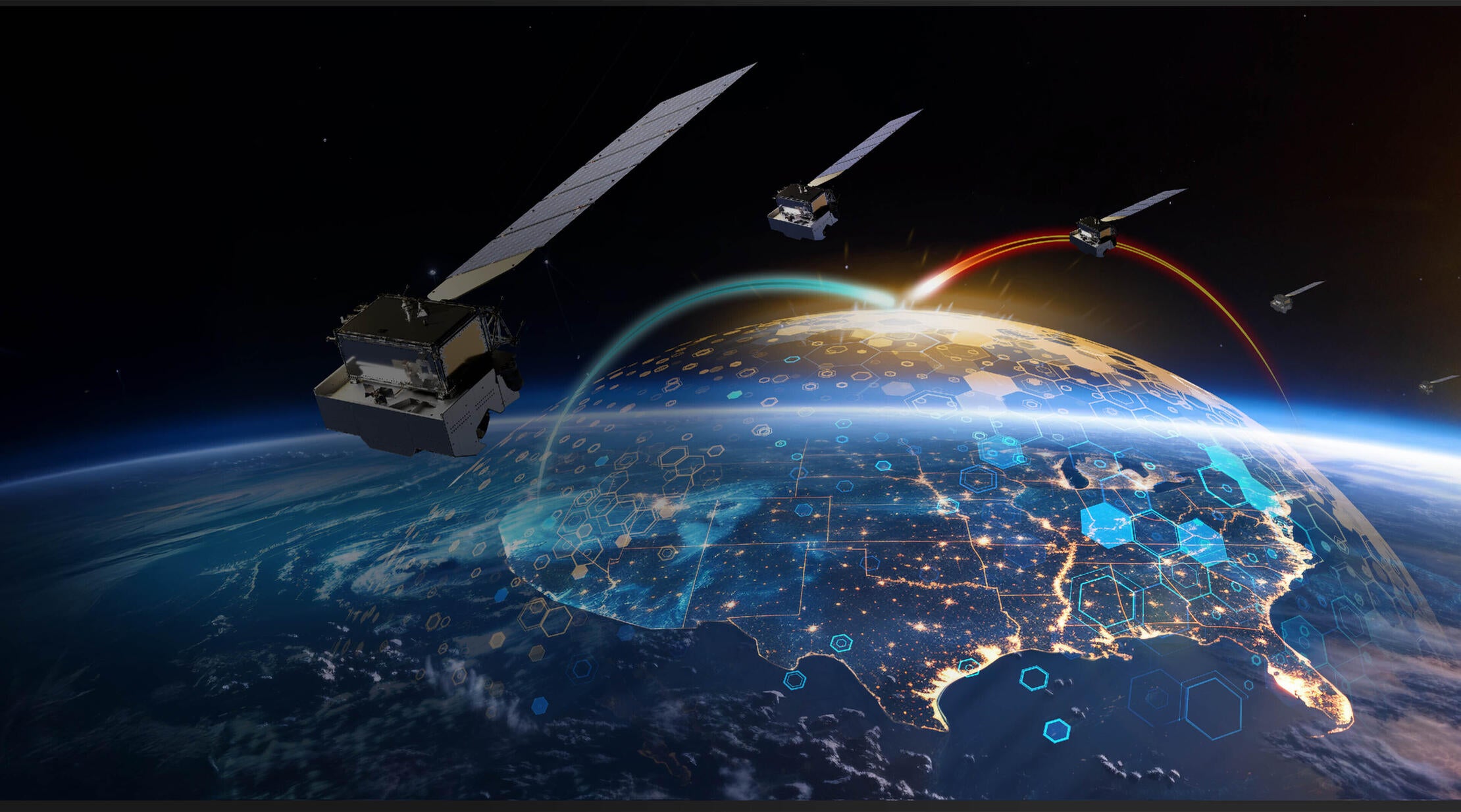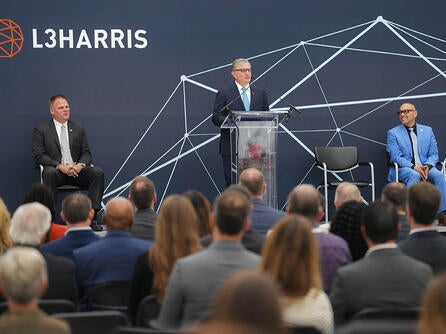
Powering Next-Generation Missile Defense for America
As global threats intensify, L3Harris is poised to deliver the multi-domain, layered solutions needed to identify, track and defeat threats.
As global threats increase, so have our adversaries’ missile capabilities. A new generation of missiles has taken center stage: hypersonic glide vehicles. These weapons are not only faster and more maneuverable than traditional ballistic missiles, but they're also incredibly difficult to track. Because of the faint heat signature and unpredictable flight trajectory of hypersonic missiles, the only way to identify and track them is with advanced satellite technology.
To stay ahead of this emerging threat, the U.S. military is building a robust constellation of missile warning and defense satellites across the following orbits: geosynchronous orbit (GEO), highly elliptical orbit (HEO), medium-Earth orbit (MEO) and low-Earth orbit (LEO). This multilayer architecture is designed to quickly detect, accurately track and precisely target threats — most notably hypersonic vehicles that elude traditional defense architectures.
We're leveraging our extensive 60-year history designing, building and testing mission-critical infrared instruments in both GEO and LEO to add vital capabilities to the U.S. military’s multilayered approach to missile warning and defense. These contributions will help keep our nation ahead of advanced, rapidly evolving threats like hypersonic missiles.
We’re answering the call to detect, identify and track advanced hypersonic missiles using multilayered, digitally engineered missile defense solutions. Our solutions provide immediate and continuous global coverage of threats using highly sensitive instruments that detect both dim and bright targets. This technology, equipped with real-time onboard processing, can follow hypersonic missiles at different geometries and atmospheric conditions.
L3Harris’ mission-defining technology is playing a critical role on several missile warning and defense satellite programs, including:
- The Missile Defense Agency's (MDA) Hypersonic and Ballistic Tracking Space Sensor (HBTSS) Program
- Tranche 0 (T0), Tranche 1 (T1) and Tranche 2 (T2) of the Tracking Layer for the Space Development Agency's (SDA) Proliferated Warfighter Space Architecture (PWSA) Program
- The U.S. Space Force’s (USSF) Wide Field of View (WFOV) Missile Warning Sensor
- The USSF Space Systems Command’s (SSC) Medium Earth orbit (MEO) Missile Track Custody (MTC) Epoch 1 Program
Threats to space-based missile warning and defense assets are growing by the day. In addition to rogue satellites and space debris, directed physical attacks and cyberattacks highlight the emerging risks the U.S. military must be prepared to combat.
L3Harris is redefining how to develop and deploy missile warning and defense satellites with responsive, resilient and affordable end-to-end solutions to quickly proliferate constellations and address emerging threats.
By leveraging proven capabilities like infrared imaging, real-time detection algorithms, and common interfaces and payloads, we're rapidly and affordably addressing our mission partners’ most critical challenges.
A resilient missile tracking architecture is a crucial component of an overall integrated deterrence effort, and we offer cutting-edge solutions for that mission. Our responsive, end-to-end missile warning and defense capabilities help improve the entire chain of detection, tracking, targeting and engagement – because the nation's warfighters require it.

01
Our secure and scalable ground infrastructure provides command and control of responsive space constellations, as well as data processing.
02
Our mission-defining sensor technology provides real-time missile detection with continuous precision infrared imaging.
03
Our production capabilities are built on years of space-mission experience, paired with the commercial speed of a nontraditional vendor.
04
Our open-architecture designs support the rapid and affordable evolution of capabilities to keep pace with evolving threats and missions.
05
Our proven ability to launch reconfigurable, multimission, software-defined payloads at scale reduces risk for customers.

Press release | 08. 21. 2025
L3Harris Technologies has completed a $100 million expansion at its satellite integration and test facility in Palm Bay to support the Department of Defense’s (DOD) urgent need for on-orbit technology for the Golden Dome for America